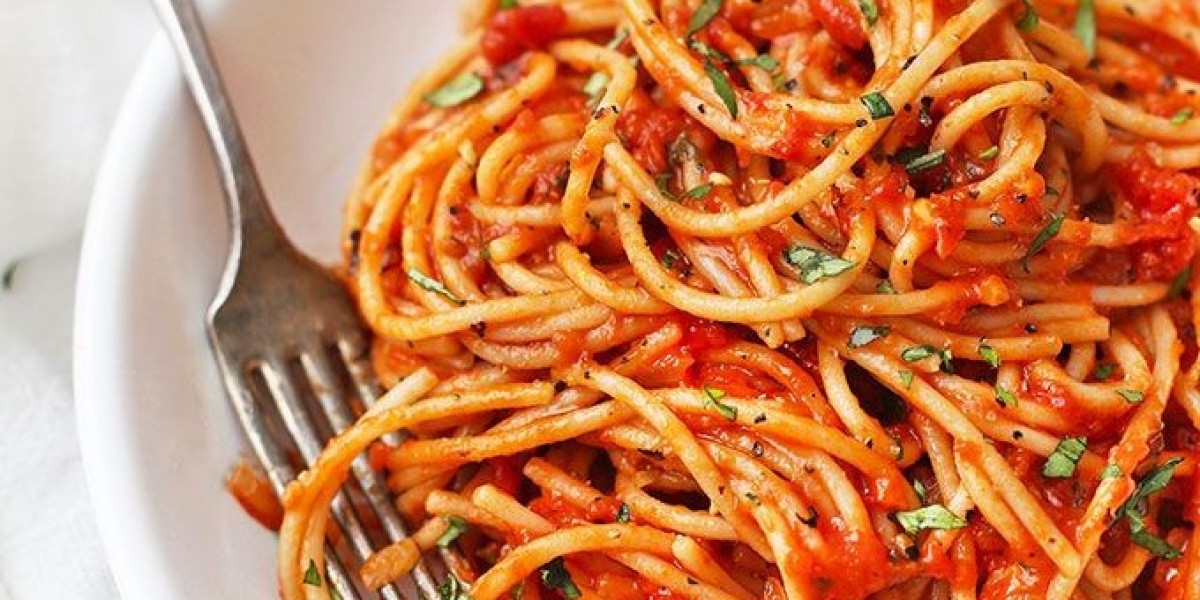In Asian cuisine, sauces are more than condiments — they are the very soul of flavor. Whether you’re enjoying crispy duck, dipping spring rolls, or stir-frying your favorite noodles, the right sauce can elevate a dish from simple to sensational. Two sauces that often find themselves in the spotlight are plum sauce and hoisin sauce.
At first glance, they might seem similar — both are sweet, rich, and savory — but their flavors, textures, and uses couldn’t be more different. If you’ve ever wondered about plum sauce vs hoisin sauce and which one adds that perfect Asian touch to your meals, this detailed guide will clear up all your doubts.
Understanding the Origins of Each Sauce
The Roots of Plum Sauce
Plum sauce is a sweet, tangy, and slightly spicy condiment that originated in Southern China. Traditionally, it’s made from ripe plums (sometimes apricots), sugar, vinegar, ginger, and chili. The result is a light, glossy sauce that perfectly balances fruitiness with a subtle hint of spice.
It’s commonly served with roast duck, pork, or fried appetizers like spring rolls. The sauce cuts through the richness of the meat and enhances its natural flavor. Its versatility has made it a household staple across Asian and Western kitchens alike.
The Birth of Hoisin Sauce
Hoisin sauce, on the other hand, comes from Northern China. It’s known for its deep, savory-sweet profile and is often referred to as the “Chinese barbecue sauce.” Made primarily from fermented soybeans, garlic, vinegar, sugar, and spices, hoisin has a thick consistency and a flavor packed with umami depth.
It’s a key player in famous dishes like Peking duck, stir-fried noodles, and grilled meats. The sauce’s complex, slightly smoky taste makes it a favorite among chefs who crave bold flavors.
The Flavor Face-Off: Sweet, Savory, and Everything in Between
The Taste Test
The main difference between the two comes down to their sweetness versus savoriness:
Plum sauce offers a fruity sweetness that’s light and refreshing, with gentle tartness from vinegar.
Hoisin sauce leans more savory and robust, with a pronounced umami punch from the fermented soy.
In short, plum sauce brightens your dish, while hoisin sauce deepens it.
The Texture Difference
Texture plays a key role in how these sauces interact with food:
Plum sauce has a silky, jam-like texture, perfect for drizzling or dipping.
Hoisin sauce is thick, sticky, and glossy, ideal for glazing and stir-frying.
When heated, plum sauce becomes smoother and more aromatic, while hoisin thickens further, enhancing its rich, smoky notes.
Ingredient Breakdown
Let’s look closely at what goes into each sauce to better understand their differences:
| Component | Plum Sauce | Hoisin Sauce |
|---|---|---|
| Base Ingredient | Plums or apricots | Fermented soybeans |
| Flavor Type | Sweet, tangy, mild spice | Savory, sweet, umami-rich |
| Texture | Smooth and light | Dense and sticky |
| Color | Golden amber | Deep brown |
| Aroma | Fruity and gingery | Garlicky and smoky |
| Typical Pairings | Duck, seafood, spring rolls | Stir-fries, BBQ, noodles |
Each ingredient serves a specific purpose — plums bring natural fruitiness and acidity, while soybeans provide hoisin with its rich umami core.
Culinary Uses: When to Pick Each Sauce
When to Use Plum Sauce
Plum sauce works wonders when you need to add sweetness and balance to your food without overwhelming it. Use it as:
A dipping sauce for spring rolls, dumplings, or crispy wontons.
A glaze for roast duck, pork ribs, or chicken wings.
A base for dressings or marinades for light meats and seafood.
A flavor enhancer for fried rice or noodle salads.
Its fruity, mild character also makes it a great addition to fusion dishes — try mixing it with soy sauce for a tangy salad dressing or drizzling it over cheese platters for a sweet contrast.
When to Use Hoisin Sauce
Hoisin sauce, on the other hand, is for when you want depth and complexity in your dish. It shines in:
Stir-fries where its thick texture coats vegetables and meat beautifully.
Marinades for grilled chicken, beef, or tofu.
Sauces for noodles or fried rice.
Dipping sauces for pancakes, rolls, and dumplings.
It’s also a star in fusion recipes — from Asian-style BBQ burgers to wraps and tacos.
Regional Influence and Cultural Value
Cantonese Lightness vs Northern Boldness
Plum sauce hails from Cantonese cuisine, where light, well-balanced flavors are prized. It complements delicate meats and crispy textures.
Hoisin sauce, on the other hand, comes from Northern Chinese cooking, known for its hearty and full-bodied dishes. The fermented base reflects the region’s preference for bold and savory meals.
Their differences mirror the diversity of Chinese culinary traditions — one highlighting delicacy and contrast, the other intensity and depth.
The Perfect Pairings
Best Dishes for Plum Sauce
Peking duck (as a lighter alternative to hoisin)
Fried wontons and egg rolls
Seafood skewers
Crispy pork belly
Chicken wings or grilled shrimp
Best Dishes for Hoisin Sauce
Beef stir-fry or kung pao chicken
Char siu (Chinese BBQ pork)
Noodle bowls or ramen
Asian BBQ ribs
Peking duck wraps
Can You Substitute One for the Other?
It depends on what you’re making. While both sauces share sweetness, their base flavors differ significantly.
If you’re out of hoisin sauce, use plum sauce and add a touch of soy sauce, garlic, and chili for more depth.
If you don’t have plum sauce, thin out hoisin sauce with fruit jam or vinegar to lighten the taste.
Still, it’s best to use the real thing when possible. For a more detailed comparison of how each performs in different dishes, check out this in-depth resource on plum sauce vs hoisin sauce.
Health and Nutrition Insights
Both sauces are delicious but should be used in moderation.
Plum sauce is usually lower in sodium and lighter in calories, though it can contain more sugar.
Hoisin sauce tends to be saltier due to soy and fermented ingredients.
When shopping, always check labels — some brands add extra sugar or preservatives. Homemade versions often taste fresher and are healthier.
Expert Cooking Tips
Use them strategically. Plum sauce pairs with lighter dishes; hoisin suits heavier ones.
Layer flavors. Combine both for a sweet-savory glaze that’s unforgettable.
Add acid. A squeeze of lime or rice vinegar can make both sauces pop.
Marinate longer. For BBQ dishes, let hoisin sauce sit overnight for richer flavor.
Balance sweetness. Add chili or ginger to plum sauce if it feels too sugary.
How They React to Heat
Plum sauce retains its smooth texture even when heated gently, becoming more aromatic.
Hoisin sauce thickens further with heat, developing a caramelized, smoky layer perfect for glazing meats.
Avoid overcooking either sauce — the sugars can burn quickly.
Storing the Sauces
Both sauces are shelf-stable until opened.
Store unopened bottles in a cool, dry place.
After opening, refrigerate immediately and always use a clean spoon to prevent spoilage.
Properly stored, they can last for up to six months in the fridge.
FAQs
Q1: Can I mix plum sauce and hoisin sauce?
Absolutely. Mixing them creates a perfect balance of fruitiness and umami. Try it as a dip or glaze for meats.
Q2: Are both sauces vegan-friendly?
Yes, most commercial versions are vegan, though it’s best to check labels for additives.
Q3: Which one works better for stir-fries?
Hoisin sauce wins here. Its thick texture and bold taste blend beautifully with noodles and vegetables.
Q4: Can I use plum sauce for marination?
Yes, but it’s best for lighter meats or seafood since it lacks the umami strength of hoisin.
Q5: Which sauce is better for dumplings?
It depends on your taste — plum sauce for something fruity and mild, hoisin sauce for a strong savory kick.
The Final Verdict
So, which one truly adds the perfect Asian flavor? The answer depends on what your dish needs.
If you crave freshness, sweetness, and tang, plum sauce is your go-to.
If you want depth, richness, and umami, hoisin sauce takes the crown.
Both sauces are treasures of Asian cuisine — one a light fruit symphony, the other a savory masterpiece. The secret lies in using them intentionally and pairing them with the right dishes.
For adventurous home cooks, try experimenting by combining the two — you might just discover your next signature sauce blend. Whether you’re glazing crispy duck or tossing noodles, one thing’s for sure: with either sauce, flavor is never missing.







